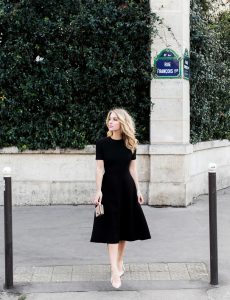For a lot of people a traditional budget can manage to cover their everyday expenses but they end up with no savings in the bank. A great option to combat this is to use the backwards budgeting method or paying yourself first.
A common misconception for backwards budgeting or paying yourself first is that it gives you the chance to spend whatever you want on your wants before paying your bills, this is not the case. This budgeting method gets you to put money toward your financial goals before paying all your bills.
Millions of people out there have absolutely no money in their savings account and couldn’t cover a $400 emergency if it came up tomorrow. That is not a way to live! The backwards budget can help you build a savings and still be able to cover your monthly expenses.
Let’s dig into how to use a backwards budget to save more money each month and start paying yourself first!
Table of Contents
What is the backwards budget?
In simple terms, the backwards budget is a method where you decide how much money you want to save each month and you find a way to make it work with the leftover.
Traditional budgeting methods get you to add up all your expenses and after paying all that (and usually spending a bit) you then figure out how much money you can save.
Starting with how much money you want to save is great for the psychology side of personal finance because it starts you off working towards your financial goals instead of starting with the bills you have to pay.
It focuses you on your big picture goals and will make you more successful at sticking to your goals!

How to Use The Backwards Budget
When you decide to use a backwards budget method you make your spending plan around your financial goals which means that you focus on your emergency fund, savings, and retirement. It’s a stark contrast to traditional budgeting where you focus entirely on your expenses.
If you’re looking to create your own backwards budget the first step is to determine your financial goals which can be done through creating a financial five year plan.
Some of your personal financial goals could include:
- Building an emergency fund (3-6 months of expenses)
- Saving at least 10% of your income for retirement
- Saving for a downpayment
- Saving for a new car
- Saving for your kid’s college
- Etc.
When you start your first backwards budget you should only focus on a few of your overall financial priorities so it doesn’t get too confusing too quickly.
It’s then time to figure out how much money you want to save towards each of these goals.
Some people choose to use percentages of their income (like the 50/30/20 budgeting method) and some people just choose an amount and stick to it.
If you decide to do percentages for your backwards budget you can put 20% of your total income towards your financial priorities. Let’s do an example…
Backwards Budgeting in Action
I’ve always found that the best way to teach someone a budgeting method is for them to see it in action. So, let’s say that our friend Frank makes $3,500 each month after taxes and deductions.
If Frank decides to use a percentage amount (i.e., 20%) for their savings, he’ll be saving $700 each month. Frank is working on building his emergency fund, and saving for a downpayment for his first home. He has automatic deductions taken from his pay for his retirement savings which were already taken out.
Frank will save $350 for his emergency fund and $350 for his home downpayment until he has 6 months of expenses in his emergency fund. At that point he can put the entire $700 toward his downpayment or start working on another savings goal.
Now, frank has $2800 left over to put towards other expenses. This will include rent, groceries, bills, and his student loan payment.
Benefits of The Backwards Budget
The first benefit of backwards budgeting is that you don’t have to constantly be looking at your spreadsheets and figuring out numbers that you can afford. You will always hit your savings goals without having to constantly track.
The second benefit is that, a big reason why people don’t save money is that they pay their expenses and then leave the rest of the money in their bank account. When you backwards budget you put the money in your savings FIRST so you have less money in your bank account at the end of the month meaning you’ll buy less stuff you don’t actually need.
Another benefit of the backwards budget is that you’ll be able to build an emergency fund relatively quickly since your savings will come out first when most people are just putting leftover money toward their emergency fund.
Downfalls of backwards budgeting
When it comes to the backwards budget there are certain things that aren’t the greatest. The first being that it is possible that you can save too much money and leave yourself with not enough to cover your expenses.
This budgeting method also doesn’t work for people who are drowning in debt, unless they turn it into a debt payoff method instead of a savings method.
You can’t have $10,000 in the bank but have $10,000 worth of debt. They essentially just cancel each other out and you’re at 0.
This method also falls a little short if you see an increase in your income. Let’s say you normally make $3,000 a month and you’re backwards budget plan is to save $500 a month. If your income increases to $4,000 and are still only saving $500, you’ll see a horrible thing happen called lifestyle creep. If you see an increase in income with this method you must increase your savings by the same percentage.
Also, if you need to know how your money is doing at all times, this may not be the best method for you. This is because the backwards budget method doesn’t involve tons of tracking and focus on your spreadsheets involved. It’s kind of a set it and forget it type of budget.
Final Thoughts
If you’ve tried a ton of different traditional budgets over the years and haven’t been able to find one that works it may be time for you to try out backwards budgeting. This budgeting method is awesome and will grow your savings insanely quickly as opposed to other methods.
Would you ever backwards budget? If so, let me know in the comments what draws you to this type of budget.
Save it on Pinterest!




Leave a Reply